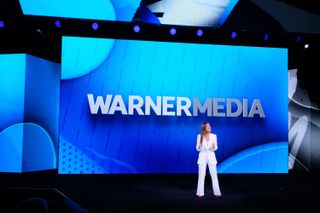Marketers Say Nets Missed Mark at Upfront Presentations

At this year’s upfront, brand safety was an important topic to media buyers and advertisers, but it wasn’t emphasized by the networks, according to a new study by Advertiser Perceptions.
The study found other differences between what was important to buyers who attended this year’s upfront and newfront presentations and what was said from the stages of Radio City Music Hall, Carnegie Hall and other venues.
Despite the disconnect, the networks had one of their best upfront market, with most network getting percentage price gains in the teens and volume increases at a time when viewership is shrinking.
“The market operates on its own supply and demand dynamics,” noted Andy Sippel, executive VP at research company Advertiser Perceptions. “And of course everybody looks smart when the market is strong.”
According to the Advertiser Perceptions study, the most important topics for advertisers attending the 2019 upfront were audience reach, composition and engagement, return on investment and return on spending, brand safety, integrated solutions and viewability and strategies to ensure ads are seen and cross platform measurement..
For the 2018 upfront, many of the same issues were top of mind among buyers, with ROI/ROS at the top of the list, followed by audience reach, cross-platform measurement, brand safety and better ways to measure advertising effectiveness.
“Marketers still love TV. They believe it still moves the needle on brands and sells product. But they’re really worried about declining reach,” said Sippel. “The need reassuring that they’re making smart investments.”
Broadcasting & Cable Newsletter
The smarter way to stay on top of broadcasting and cable industry. Sign up below
Sippel said that his marketer clients said what they wanted to hear was an “eat your vegetables” message.

But what the buyers said they heard emphasized by networks executives speaking at their upfront presentations were integrated solution on TV, digital and mobile screens, technological innovations like apps and virtual reality, audience reach and composition, strategic partnerships and branded entertainment and other marketing capabilities.
“They didn’t provide a big enough signal to the marketers that they hear them and they understand them and they want to help solve their problems. That’s what comes through for me in the research,” Sippel said.
A year ago, the networks did a better job in addressing buyers concern. Topics emphasized at the upfronts, according to the 2018 survey were brand safety, data-enhanced TV buying, audience reach, composition and engagement, commercial loads and the power of TV as an ad medium.
“Standing up on stage and talking about audiences and ROI is really not the kind of thing that dazzles,” Sippel said. “Those things are really best tackled in face-to-face meetings, and these guys do talk about it in the face-to-face meetings.”
Sippel said that most buyers still seem to see value in the expensive upfront presentations, even if the speakers on stage don’t always address their primary concerns. “They get to network with their colleagues. They get out of the office. They go to a party or two. I creates some excitement around the industry,” he said.
Advertisers do appear to be buying the media company strategy of getting bigger to be able to provide their customers with greater scale. In the survey, said that when it came to what influences media selection, the strength of a conglomerates portfolio was cited by 38% of those responding compared to 20% who said it was the power of individual media brands.
Sippel said that marketers like increasingly bigger media companies because those bigger media company can provide reassurance that they’ll get the reach they need and be less risk.
“When they’re making investments in the television market, they’re able to buy the portfolio and spread their chips around,” he said.
For its study, Advertiser Perceptions interviewed 395 marketer or agency executives in May and June. The executives were responsible for spending at least $5 million on TV or $1 million in digital video.
Jon has been business editor of Broadcasting+Cable since 2010. He focuses on revenue-generating activities, including advertising and distribution, as well as executive intrigue and merger and acquisition activity. Just about any story is fair game, if a dollar sign can make its way into the article. Before B+C, Jon covered the industry for TVWeek, Cable World, Electronic Media, Advertising Age and The New York Post. A native New Yorker, Jon is hiding in plain sight in the suburbs of Chicago.










